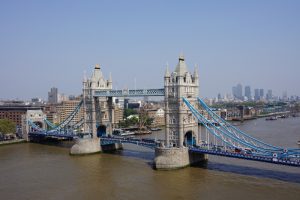Beijing’s deteriorating air quality has created public anger and forced the authorities to be more open about the severity of the problem. Pressure for a lasting solution from central government continues to increase and a major announcement is expected this month.
On July 24 some early details of these plans were released. The Airborne Pollution Prevention and Control Action Plan (2013-17) will be the second initiative to tackle pollution in the past two years and will be backed by 1,700 trillion yuan (US$277 billion) in total investments from the central government.
chinadialogue asked a number of leading experts from industry and academia for their opinions on the plans:
Steven Q Andrews is an environmental and legal consultant based in Beijing.
“Last week, the deputy mayor of Beijing announced a target of decreasing particulate (PM2.5) concentrations by 25% in the next five years based on 2012 concentrations. Compared to the slow improvement in the official numbers over the past decade, the new targets are ambitious and will be difficult to achieve. Officially reported particulate concentrations (PM10) in Bejiing have only decreased by approximately 23% in the past 10 years, and approximately 11% in the last five years.
But these officially reported improvements don’t account for changes in monitoring locations that have resulted in significantly lower official concentrations. Even worse, air pollution in Beijing has been significantly worse this year. Based on US Embassy data, particulate concentrations (PM2.5) in Beijing have been approximately 25% higher in the first six months of this year compared to last year.
The central government also recently released plans to invest 1.7 trillion yuan (US $277 billion) to control pollution during the next five years. Although announced in China Daily as a “Tougher plan to reduce air pollution”, at present nothing appears tough about the plan. The brutally high levels of air pollution in Beijing and across China cause severe health impacts and trillions of yuan in economic damage. Substantial and expensive investment in pollution control technologies is absolutely necessary. However, it is unclear how this planned investment will be spent. While the recently announced environmental targets and investment plan for pollution control may help improve air quality, stronger enforcement and active public participation will help ensure that it does.”
Wu Changhua is the Greater China Director of The Climate Group and an environment and development policy analyst.
“While the targets are set mostly to address the Beijing-Tianjin-Hebei regional air pollution issues, I believe that other regions will quickly join the league. Air pollution is no longer a challenge concentrated in just northern China, rather, it is already blanketing a vast area of the country.
There are a few other points I would make:
1) If we take the set targets as given, we need to understand what major actions will be taken to achieve them. Coal consumption will probably be addressed. first. Not only a reduction of coal consumption, but critically, substituting coal for cleaner energy. National gas, renewables, electrification of transportation, and much cleaner coal will probably form the largest part of the supply side. On the demand side, this region will showcase the most energy efficient performance in industrial, building and transportation sectors. And the highest fuel standard will be adopted, closer to the EU’s most restrictive level.
2) If the most aggressive action is only taken in the Beijing-Tianjin-Hebei region, it won’t be surprising if some heavy industries relocate to other "pollution heavens" [i.e. where regulations are less strict]. The central and western part of the country is at a critical juncture to take-off economically, by achieving another doubling of total and per capital GDP. Steps taken in the Beijing-Tianjin-Hebei region will naturally have major repercussions in those regions. What’s needed is a national vision regarding planning and enforcement in order to effectively address air pollution issues.
3) The Beijing-Tianjin-Hebei region has the highest concentration of R&D capability and capacity in China. If properly tapped, it could become the centre of the solution to China’s environmental challenges, in particular air pollution. The 1.7-trillion yuan budget, if used well, could trigger a clean revolution at the regional level in China, involving the largest ever deployment of clean technology.
4) The highest levels of energy efficiency will be implemented in the Beijing-Tianjin-Hebei region. This will cover construction, transportation and consumer products. Green building codes, LED lighting, renewable energy, and clean coal power generation will become part of the features of this regional clean revolution.
Market demand for energy efficient products and services is key to the success of a clean revolution. Consumer awareness and willingness to pay is critical for achieving the air pollution emission reduction targets. I expect a much stronger partnership among government, business and civil society to mobilise the largest possible market demand for a clean revolution."
Angel Hsu is a Post-doctoral Associate at Yale University and Director of the Environmental Performance Measurement Program at the Yale Center for Environmental Law and Policy
"Following a series of extreme air pollution events this year, China’s Ministry of Environmental Protection (MEP) has released a new plan to tackle air pollution. According to China Daily, the plan, which was approved by the State Council last month, will be supported by 1,700 billion yuan (US $277 billion) in total investments by the central government. To put this amount of financial backing in perspective, the 1990 U.S. Clean Air Act Amendments cost US $85 billion in comparison.
Unsurprisingly, the plan’s major focus will be on PM2.5, setting stricter limits for major urban areas to achieve a 25% reduction from 2012 levels by 2017. In practice, for major megacities like Beijing, which averaged around 124 μg/m3 of PM10 (coarse particle pollution) in 2011, cutting 25 % will still mean levels well above the WHO recommended level of 10 μg/m3. Nonetheless, it’s a strong indication from the top levels of Chinese leadership that the central government is making air pollution control a priority.
Another positive step is that many cities within China have already updated their own PM2.5 reduction targets for 60 micrograms per cubic meter by 2017, which is the WHO interim target. It remains to be seen whether these targets will be further revised after implementation of the new plan is underway. Earlier this year, the MEP also urged the 113 key environmental cities to release PM2.5 data ahead of schedule, by October as opposed to the original requirement for the end of year."




